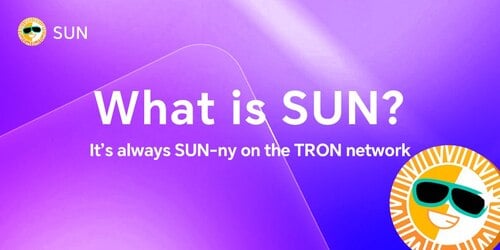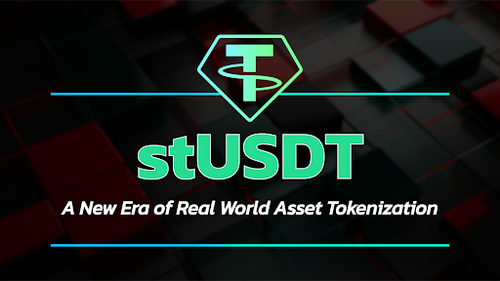What Are TRC-20 Tokens?
TRC-20 tokens are a token standard for the implementation of smart contracts and the creation of fungible tokens issued on the TRON blockchain. They adopt a similar contract design as ERC-20 tokens, but are designed to just run on the TRON blockchain and can only be transferred to another blockchain network through bridges.
Key Takeaways
-
The TRON blockchain is a smart contract blockchain, which means it supports separate cryptographic tokens that rent its technology to operate as separate assets.
-
TRC-20 tokens are a class of these assets and are designed to run on the TRON blockchain, along with the native TRX coin.
-
They are designed according to the TRC-20 standard which allows them to utilize the TRON blockchain and function as easily transferable and fungible assets.
-
TRC-20 tokens can be stored on supported wallets like TronLink and can be integrated into decentralized applications that run on the TRON network.

An average of $20 billion worth of TRON USDT is moved every 24hrs across exchanges and personal wallets. The stablecoin is minted on the TRON blockchain and works just like any other token on a smart contract blockchain. In addition to the TRON USDT, the TRON blockchain hosts several other similar digital assets all designed according to the same smart contract standard – the TRC-20.
TRC-20 tokens are an integral part of the TRON ecosystem, running on the smart contract network and controlling a cumulative market capitalization of over $1 billion at the time of this writing, with over $30 million worth of TRC-20 tokens traded daily. But what is TRON and what are TRC-20 tokens?
What Is the TRC-20 Token Standard?
TRC-20 tokens are issued on the TRON blockchain and they work in the same way as other smart contract tokens that designed according to a similar smart contract standard. TRC-20 adopts the same smart contract design as Ethereum’s ERC-20 tokens, which is the technical standard for implementing fungible tokens within smart contracts on the Ethereum blockchain, and the ERC-20 standard is also adopted by BNB's BEP-20. The TRC-20 token standard lets developers create token applications that are interoperable with other products and services on the TRON blockchain, with functionalities like transferring tokens, retrieving an account's token balance, and retrieving the total supply of the token available on the network.
Other Types of TRC Token Standards
Beyond the TRC-20 token standard, TRON is also home to other token standards, some of which operate in a similar way to the ones on Ethereum. These include:
-
TRC-721: The token standard which is used to issue non-fungible tokens on the TRON network.
-
TRC-1155: This is similar to the ERC-1155, and is used to represent and manage multiple fungible or non-fungible tokens at the same time in one contract to improve development efficiencies.
-
TRC-10: TRC-10 tokens are unique to TRON and are based on chain instead of the TVM. Every account in the TRON network can issue the TRC-10 token after paying the fee of 1024 TRX. The TRC-10 has lower transaction fees than TRC-20 tokens, but it requires bandwidth for API transactions and deposits.
What Are Smart Contract Token Standards?
Smart contract standards define the mode of operation of smart contract tokens including certain general characteristics like transferability, issuance, and circulation. Like the Ethereum blockchain, transactions involving these smart contract tokens are executed on the TRON blockchain, and fees are paid in the TRON native token (TRX). Tron blockchain also supports decentralized applications through its own version of the Ethereum Virtual Machine (EVM).
What Is the TRON Blockchain?
Before the crypto space blossomed in an outburst of smart contract platform blockchains, two blockchain networks shared this sector – the Ethereum blockchain and the TRON blockchain. Launched in June 2018, the TRON blockchain mined its first block barely a month later and quickly moved up the ranks, catching up with the older Ethereum blockchain.
The Justin Sun-led project was principally created for this purpose with major differences being its transaction speed, consensus algorithm, and fees paid per transaction. In contrast to the early Ethereum blockchain, the TRON blockchain executed transactions faster and charged a lesser fee. TRON was also faster to adopt the Proof-of-Stake consensus mechanism, instead of Ethereum’s then PoW.
Like Ethereum, the TRON blockchain is a smart contract blockchain with support systems for smart contract tokens that are built according to different smart contract standards. The TRON blockchain has seen a good level of adoption since its genesis block and has retained a spot in the top 20 cryptocurrencies with a market capitalization of close to $6 billion at the time of this writing.
Smart contract tokens on the TRON blockchain have remained relatively under the radar for quite a while. Despite a good number of smart contract tokens being minted on the blockchain regularly, most of these are relatively obscure. But with the advent of DeFi and the purchase of BitTorrent by the TRON foundation, TRON tokens have become prominent. A majority of these tokens are designed according to the TRC-20 standard.
How to Create a TRC-20 Token
To create a TRC-20 token, the issuer writes a contract in Solidity. The Solidity programming language was originally designed for the Ethereum blockchain but is also supported by the TRON blockchain. The developer then puts down in code the complete structure of the token. This includes every detail of how the token will function. Some of the primary parameters specified in the smart contract include:
Transaction Function
TRC-20 smart contracts bear the code bits that support routine transactions involving the token. The send and transfer functions are used to define the process through which the token is moved from one wallet address to another. The issuer also considers the security implication of using any of the transaction functions as they are prone to vulnerabilities that can be easily exploited.
Distribution Scheme
The TRC-20 smart contract standard allows for the creation of multiple copies of a token; that is, the issuer can create as many numbers of the same token as he wishes. For example, “one million ‘X’ tokens”. The contract also defines the distribution pattern for the token. The issuer can also define the vesting agreements on the contract.
Automation and DeFi parameters
Smart contracts are like vending machines. Therefore, a smart contract token issuer will need to define that when satisfied, triggers a self-functioning action. The extent to which this is done (and if it should be done at all) depends on the needs of the project or decentralized application that uses the token.
With the advent of decentralized finance, TRC-20 tokens also need to be programmed for integration into decentralized finance systems. The TRC-20 token issuer will need to specify exchange slippage percentage, and possible tax and sell functions.
Contract Ownership
The code for TRC-20 smart contract token creation should also define the ownership of a contract. The level of ownership on a TRC-20 token determines the ability of the concerned party to interact with the contract even after it has been deployed. In order to ensure decentralization, the issuer may renounce the ownership of the smart contract. Renouncing the ownership of a smart contract means that the creator will be unable to make changes to the core code once it has been deployed. TRON blockchain charges up to 100 TRX to mint smart contract tokens.
After structuring the smart contract code, the issuer deploys the contract on the TRON blockchain. To mint the token, the issuer pays a fee and the fee paid varies according to the smart contract structure.
The smart contract code is interpreted by the TRON blockchain with the aid of the TRON Virtual Machine (TVM). The TVM works quite like the Ethereum Virtual Machine (EVM). It translates the command to machine language and feeds the TRON network with the details.
The Tron blockchain executes the command by minting the specified number of TRC-20 tokens and according to it, the features stated by the issuer. The minted tokens are sent to designated wallet addresses (usually the creator’s wallet). Once this is done, the new TRC-20 token can be used like any other digital token, and can be used to represent any class of asset on the blockchain.
TRC-20 vs. ERC-20 Tokens
TRC-20 tokens are very similar to ERC-20 tokens, where anyone can create tokens using the smart contract token standard and deploy these on the blockchain.
A major difference between both variants is the network on which they operate. TRC-20 tokens are native to the TRON network and cannot be transferred in their original form to any other blockchain network. In order to use a TRC-20 token on a different network, you’ll need to use a bridging solution to transfer it out of the TRON blockchain. Likewise, ERC-20 tokens are native to Ethereum and its ecosystem, and cannot be transferred to another blockchain network without bridging solutions.
USDT TRC-20 vs USDT ERC-20
Tether created the USDT stablecoin as a measure against the liquidity issues that rocked the crypto space at the time. The USDT stablecoin was first created as special assets on the Bitcoin blockchain through the Omni layer. In the wake of smart contract technology on the Ethereum blockchain, Tether’s stablecoin was issued on the Ethereum blockchain as an ERC-20 smart contract token. Since this time, ERC-20 USDT accounts for the greater percentage of issued USDT stablecoins.
In 2019, Tether announced its plans to issue the USDT stablecoin on TRON Blockchain as well. TRON network’s low transaction fee and three seconds block time were cited as the major reasons for this move. The TRC-20 USDT would rapidly rise to prominence. Sequel to the announcement, the TRON network has witnessed the issuance of over $37 billion worth of USDT stablecoins, catching up to the $39 billion issued on Ethereum.
TRON blockchain’s ascension in terms of USDT custody stems from its cost-effectiveness, especially during the period of high Ethereum gas fees. Technologically, both assets work in the same way and are of the same smart contract standard. TRON blockchain charges negligible fees of a fraction of a cent for an on-chain USDT transaction while the Ethereum blockchain currently charges around $0.80.
What Wallets Support TRC-20 Tokens?
Cold and hot wallets with built-in support for the TRON network are likely to support TRC-20 tokens. Here are some wallets that support TRON (TRX) and TRC-20 tokens:
TronLink
Tronlink is the official cold wallet of the TRON blockchain. Over 90% of TRON blockchain users hold and transact their assets using the Tronlink wallet. The Tronlink wallet has been downloaded over 12 million times across major application stores. Tronlink empowers users to enjoy the Tron blockchain while securing their assets. Users can store the native TRON tokens (TRX) as well as smart contract tokens. Tronlink also supports the storage of NFTs minted on the Tron blockchain.
The Tronlink wallet is equipped with in-built swap protocols to allow investors to swap native TRON assets from their wallets.
Tronlink offers a gateway to decentralized applications for investors on the TRON network. TRX and TRC-20 holders can access decentralized finance platforms and connect their wallets through the Tronlink DApp browser built into the Tronlink mobile wallets. For desktop devices, the Tronlink wallet also comes in browser extensions. The Tronlink browser extensions also work like the MetaMask extensions and can be installed on supported browsers. The Tronlink extension is currently supported by Chrome, Microsoft Edge browser, and Firefox browser.
Trust Wallet
Multi-chain cryptocurrency wallet application – Trust Wallet – has integrated multiple networks into its asset storage system. Supported networks include Bitcoin, Ethereum, Ethereum cross-chains, and the TRON network. TRON holders can create a separate wallet for holding their TRX on Trust Wallet or add Tron Network to their multi-chain wallet. Trust Wallet supports TRC-20 tokens and TRON NFTs as well.
Through Trust Wallet’s decentralized application browser, TRON investors holding their assets on the wallet can access TRON dApps regardless if they are using a single or multi-chain wallet.
Atomic Wallet
Published statistics claim that over 4 million cryptocurrency investors store their assets in Atomic Wallet. Atomic Wallet aggregates multiple blockchain networks and presents users with a platform to store multiple assets in one piece. Atomic Wallet supports Ethereum, NEAR, Zilliqa, TRON network, and tons of other blockchains. Users can store, transact their tokens and perform other activities like staking on the platform.
Atomic Wallet supports the native TRON network token and TRC-20 standard tokens.
Can I Use MetaMask to Store TRC-20 Tokens?
MetaMask serves over 10 million cryptocurrency investors. The MetaMask browser extension and mobile wallet are some of the most used applications for web3 enthusiasts. MetaMask supports the Ethereum network, related Layer 2 networks, and cross-chains. Users can store ETH, as well as tokens, NFTs, and assets native to any Ethereum-integrated cross-chain and Layer 2 networks, but not native TRC-20 tokens.
MetaMask is yet to develop a support system for the TRON network and its tokens and there’s been no hint of TRON network support for MetaMask. However, TRX and TRC-20 tokens bridged to any of the supported networks can be stored on MetaMask.
Final thoughts
The TRON ecosystem accounts for less than 1% of the total cryptocurrency market capitalization; nevertheless, it features a handful of interesting projects. Tron blockchain boasts a relatively fast transaction speed and charges an affordable fee for these transactions.
TRC-20 projects traverse the TRON network and enjoy these benefits while powering applications built on the blockchain. Like many other smart contract networks, the TRON ecosystem continues to expand as more projects deploy decentralized solutions and issue their native tokens atop the blockchain.
Through the Proof-of-Stake consensus algorithm, TRON network claims to have adopted a sustainable system that keeps the blockchain alive and costs fewer resources. TRC-20 takes the form of other tokens designed using a similar standard while offering the benefits of the TRON blockchain.
As always, remember to do your own research before investing in any cryptocurrency project. For the safety of your TRC-20 token and TRX assets, consider adopting decentralized storage options by using a hardware wallet and keeping your assets in non-custodial wallets.
Also, note that this content is purely educational and no part was meant to be financial advice

Joel is deeply interested in the technologies behind cryptocurrencies and blockchain networks. In his over 7 years of involvement in the space, he helps startups build a stronger internet presence through written content. Follow the author on Twitter @agboifesinachi





 Or check it out in the app stores
Or check it out in the app stores
